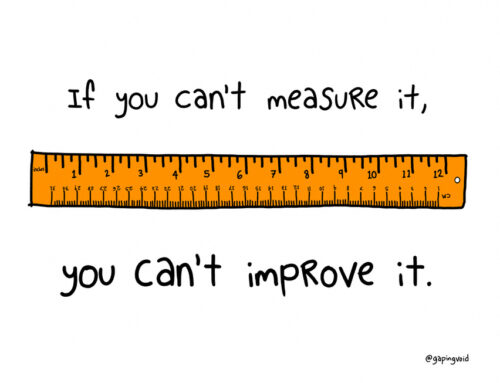6 Steps to Transform Your Life
March 13, 2019
Categories: Change
One of the things I’m most passionate about in life is transformation. I love to see people tackle their problems and make huge changes in their life. That’s why I became a psychologist in the first place. I love to help people reach their goals, whether it is a health goal like losing weight, a relational goal like improving one’s marriage, or a work/financial goal like finding success in one’s career.
But if you’re like most people, change is a struggle. It’s hard to change ANYTHING, even something that seems simple like biting your nails. Making real and lasting changes in your health, relationships, or work is difficult. How can we tackle our most challenging problems in a way that actually works?
I’ve been working on a model that has been helpful for me when I’ve tried to change something in my own life, and I’d like to share it with you. The model has 6 steps, and each step is important. As we work through the model, think about something you’d like to change in your own life. Think about how each step can help you get where you want to go. The model is easy to remember because each step starts with the letter “P.”
Step 1: Picture
The first step involves getting a clear picture of what you want. This is important, but many people skip this step. The danger of skipping this step is that you aren’t clear on what you really want. It’s hard to take steps toward a goal if you aren’t sure what direction you are heading.
Identify Your Values
One key thing to do when trying to get a clear picture of what you want is to identify and get clear on your values. Values get at the foundational things in your life that you believe are important. For example, having a thriving marriage is a value. Being physically healthy is a value. Values are different than goals. A goal is a specific thing that you can achieve and check off your list. Values are ongoing patterns of action that you can continue your entire life. For example, living a physically healthy lifestyle is a value. Losing 20 pounds is a goal.
Make the Want Something You Can Control
One critical mistake people make when picturing what they want is to focus on something that is outside their control. This is a mistake, because we have limited power to change these things. To give a simple example, let’s say you want it to be warm and sunny outside. You have zero control over this, so it’s not a good thing to focus on. The weather might be warm, or it might be cold. It might be sunny, or it might be rainy. It doesn’t matter how much you want the weather to be warm, it may not happen.
But other examples are trickier. Let’s say you want a great job that pays you a six-figure salary. The specifics of this want might be outside your control right now. However, there might be something related to this want that you do have the power to change. For example, what kind of person would be competitive for a great job that pays a six-figure salary? What changes do you need to make in your life so that you could become that type of person? This is the work of getting a clear picture of your want.
Miracle Question
One helpful exercise I like to use to help people clarify their want is the miracle question. The miracle question is a quick exercise, and it works like this: Sit back in your chair and press the pause button for a few minutes. Get rid of the distractions in your environment—shut down your email and put your phone on silent. Imagine that you go to bed this evening, and when you wake up the next morning, a miracle has happened. Your problem has magically disappeared, and your life is just as you want it. What would your life look like? What specifically would be different? How would you be different? How would you think and feel? What kinds of things would you do? Write out what your life would look like on a piece of paper. This can help you clarify your values and get a clear picture of your want.
Step 2: Plan
The second step is to put together a practical plan of action that will move you in the direction of what you want. Some people struggle to transform their life, not because they don’t know what they want, but because they don’t know how to get there. For just about anything you want to change in your life, there is usually a tried-and-true method for getting there. Someone has been successful at doing what you want to do. You don’t have to reinvent the wheel. With the Internet and Amazon, you can literally access thousands of experts across the world, and a book will be at your doorstep in 2 days.
For example, if you want to make changes in your health, there are entire fields of study on health, nutrition, and fitness. If you want to improve your relationship, there are tons of great books on navigating marriage, parenting, and work relationships. If you want to make strides in your work or finances, there are hundreds of great resources on developing relevant skills and managing your personal finances. Don’t let all this awesome information go to waste. Learn what you need to be successful.
Get a Support Team
Don’t go at it alone. Often the process of transformation will involve getting help from an expert in the area you want to change. Get a team together to help you get where you want to be. You might need a personal trainer, nutritionist, psychologist, counselor, psychiatrist, life coach, or financial advisor. Don’t be afraid to ask for help if you need it.
Start Small
Once you get your team in place and start to learn what you need to do to transform your life, set out small but attainable goals. Take a small step forward. For example, if you’ve never run before, 5 miles is too much too soon. Set out to run 5 minutes, and increase slowly from there. Celebrate each goal when you reach it, and then set your sights on the next one.
Action is Key
The key when implementing a plan of action is that last word: action. A perfect plan is worthless if you don’t act. So, get going! Once you get your plan in place, try to do one thing each day that moves you in the direction of your want. Don’t just think about it or talk about—actually do something. Your actions and behaviors are what counts.
Step 3: Psychology
This step is where things start to get a bit more complicated. For some people, all they need is help clarifying what they want and a plan that works, and they’re off to the races. If this is you, great! Way to go! However, sometimes a clear want and a solid plan aren’t enough. For example, you might know that you want to live a healthy lifestyle, and you might know what foods to eat and what foods to avoid. You might even have a great workout plan. But for some reason, you just can’t seem to follow your plan. What do you do when you can’t follow through on what you have set out to do?
That’s where psychology comes in. Psychology is all about human behavior—why do we do what we do? Psychology is a massive discipline, and it’s impossible to summarize everything that might be happening that could block you from getting to where you want to be. But I’m going to cover a few of the key blocks that people often struggle with. See if any of these blocks are consistent with your experience.
Block #1: Lack of Motivation
Some people struggle with a lack of motivation to make changes in their lives. They get a picture of what they want, and a good plan for how to get there, but when the rubber meets the road, they can’t seem to make progress. The reality is that changing anything is difficult. You have go get going, and this requires energy and motivation. Sometimes the motivation is nowhere to be found.
When people struggle with motivation, I try to direct them back to the picture of what they want and their values. Sometimes people think they want something, but when it comes down to it, they don’t really want it bad enough. A key question I ask people is: What are you willing to suffer for? If you aren’t willing to suffer for something, you don’t really want it.
It can be helpful to link what you want to your core values, and make those connections explicit. Also, think about what good thing would happen if you were able to make the change and get what you want. What are the positive aspects of changing? What are the negative aspects of staying where you are at? What about the other side of the coin? What are the negative aspects of changing? What are the positive aspects of staying where you are at?
Block #2: Bad Habits
As human beings, we tend to automate our actions and behaviors. This is actually a good thing—if we had to think about things like modulating our heart rate or breathing, things would get too complicated quickly! However, the downside of our automation habit is that we can get into a rut with unhealthy behaviors, and these habits can be tough to break. It takes a lot of discipline and willpower to change even simple habits, like biting your nails or checking your email every 5 minutes. The good news is that you can automate healthy habits as well, like drinking water or exercise. However, it’s tough to develop a healthy habit. One research study found that it took people about 66 days of consistently engaging in a behavior before it felt like a habit.
Block #3: Lack of Discipline
Sometimes the urges that we experience in the moment aren’t healthy for us in the long run. It might feel great in the moment to eat the whole pizza, lay around all day and watch Netflix, or go home with the random person you met at the bar. It’s more difficult to restrict what you want right now in the service of what you really want long-term. There was an interesting study where a researcher offered a child a marshmallow, but told them that if they waited 20 minutes, the researcher would bring them 2 marshmallows. The kids who were able to resist what they wanted right now in the service of what they ultimately wanted were more likely to be successful (e.g., in school, work, relationships) later in life.
Block #4: Lack of Focus/Direction
Some people can maintain their focus and direct their life as they choose. Other people are blown about by various things or the wants of other people. If you’re complaining about how you never have enough time in your day to complete your most important tasks, it’s a good sign that you’re not in charge of your schedule. The most successful people are organized and decide ahead of time how they are going to spend their time, often scheduling in every hour. Also, successful people tend to focus their attention toward the positive (vs. the negative) and the things they can control (vs. the things they can’t).
Block #5: Old Patterns
Many people struggle because they have old patterns that are entrenched. Often these patterns have been online since you have been a child. They may have been helpful and adaptive back then, but now they are hurting you. For example, maybe your parents weren’t able to give you the love and care you needed, so you developed a pattern that you needed to do life on your own. You became super-independent. Now you’re trying to connect with your spouse or kids, and you’re having a hard time. The pattern of not letting anyone in might have worked for you when you were growing up (maybe the pattern even allowed you to survive). But now it’s holding you back from reaching your goals.
Navigating Blocks
Psychology can help us figure out what is getting in the way from making progress toward our goals. You know what you want (Step 1). You know how to get there (Step 2). When you move forward toward your want, what happens? What gets in the way? It can be helpful to get some insight into the block. Is this a pattern that feels familiar? Does it remind you of anything from your childhood? What needs to happen in your life for you to make it through your block and get going toward your want?
It’s important to note that sometimes you can’t figure out how to navigate your blocks on your own. Sometimes you need the help of a psychologist or counselor. There’s nothing wrong with needing help! I’ve been to quite a bit of therapy over the course of my life, and it has been incredibly helpful. Don’t hesitate to get extra help if you need it.
Step 4: Physiology
The fourth step has to do with physiology and your body. We might not think about our physiology as being important, but it’s essential to living a healthy and effective life. Have you ever felt really anxious or depressed, and then realized you were exhausted, hungry, or hungover? The state of your body was negatively impacting the state of your mind. It’s difficult to transform your life if your physiology isn’t on point.
The Basics
Let’s cover some basics first. If you’re struggling in your life right now, it’s important to make concrete changes in each of these areas to get your physiology back on track.
- Sleep. Sleep is essential for healthy living. Most people need 7-8 hours of sleep per night. Also, it’s helpful to have a regular pattern. Go to bed and get up at around the same time every day.
- Exercise. Exercise is key for a healthy life. It doesn’t matter as much what type of exercise you choose to do, but get moving! Make sure some of your exercise is high intensity—don’t just lollygag around. Also, if you haven’t incorporated weight training into your routine, I highly recommend it. It’s important for long-term mobility and health.
- Nutrition. Are you eating enough healthy foods each day? Are you eating in moderation (i.e., not too much, not too little)? Are you eating natural foods? (Forget the processed crap. Stay on the outer perimeter of the grocery store.) Are you drinking enough water each day? Make sure your nutrition is on point.
- Drugs/Alcohol. What is your relationship with drugs and alcohol? If you’re struggling in your life, my recommendation is to cut out all drugs, alcohol, and even caffeine to get your body back to baseline. People waste so much of their lives being high or hungover. Your potential is too great to waste your life like that.
Priming Your State
There are ways you can prime your state or physiology to put yourself in the best possible position to transform your life. For example, psychologist Amy Cuddy did research showing that standing in front of the mirror and striking a “Wonder Woman” power pose can increase your confidence. The power pose doesn’t quite do it for me, but I have found that engaging in even 60 seconds of vigorous exercise (e.g., pushups, burpees, air squats) can prime my state and put me in a more powerful frame of mind. Tony Robbins has a routine he engages in each morning where he thinks about 3 things he is grateful for, and then he visualizes the 3 most important things he wants to accomplish today. He pictures them being completed, and the feeling that would accompany his victory. Then he’s ready to start his day.
These are just some ideas to try. Find out what works for you. But remember, our physiology can be a powerful determinant of our thoughts, feelings, and behaviors. If you find yourself in a down mood or feeling sluggish, get your body moving and do something to shift your physiology.
Step 5: Persistence
Change and transformation doesn’t happen overnight. It doesn’t even happen in one week, or one month. Sometimes change and transformation takes a long time. In these situations, you absolutely have to be patient with yourself and persist. I love the quote by Benjamin Franklin, who said “Energy and persistence conquer all things.”
I remember back in high school when I was trying to lose weight. I made a commitment to eat healthy and run every day. About a month into my commitment, I looked in the mirror and started to cry. I didn’t feel like my body had changed AT ALL. I thought I looked exactly the same. I started to feel depressed. “Maybe none of my effort is doing any good,” I thought to myself. There was a part of me that wanted to quit.
I’m glad I kept at it. Fast forward 6 months: I had lost 60 pounds and completely transformed my body.
If you want to reach your goals, you absolutely have to keep going when you feel discouraged. Your breakthrough might be just around the corner.
Navigating Setbacks
Another key consideration when working to transform your life is the reality of setbacks. Change rarely occurs in a perfectly straight line. Usually people take two steps forward, and one step back. Sometimes it’s two steps forward and three steps back. This is normal. It’s important to see setbacks as a normal part of the process, rather than throwing up your hands in despair and quitting.
When you experience a setback, press the pause button and think about what happened. Usually setbacks don’t just happen in a vacuum. What were the choices that led up to your setback? How could you have stopped your progression at the first or second step, before it was too late? How could you do something different in the future?
After you have learned from your setback, re-engage with your change effort. In the grand scheme of things, your setback is small. When you have transformed your life and achieved your goal, your setback will be just a small part of your story.
Step 6: Peace
The first 5 steps have all been about engagement, transformation, and change. But it would be a mistake if I didn’t spend some time discussing something I believe is equally important for a happy, balanced life: peace and acceptance.
The reality is that even if you fully engage with each of the first 5 steps, there may be some things in your life that don’t turn out as you would like them to be. Life is difficult and full of problems. Some problems are not easily solved. There are times in life when we run into one of our limitations. What do we do then?
Acceptance absolutely needs to be a tool in your toolbox. When you have a clear picture of what you want, have implemented an effective plan of action, worked through your psychology, primed your physiology, and persisted over time, you put yourself in the best possible position to transform your life and reach your goals. But what if you still fall short of where you want to be?
That’s where acceptance comes into play. I remember my freshman year of college, I ran cross-country. I wasn’t very good. As hard as I worked, I struggled to improve. I dealt with injuries such as shin splints, which made it difficult for me to increase my mileage and train hard. The reality was that I was not going to be a star cross-country runner. I had reached a limitation.
I had two options. I could get angry and depressed about my limitation, and be unhappy. Or, I could shift gears, accept and grieve my limitation, and move on. The reality was that I had a lot to be grateful for, even though my cross-country career didn’t turn out how I wanted. There were other things in life that I could work on and apply my energy toward. And that was okay. Even in very good lives, things don’t always turn out as planned. You can control your process, but you don’t have full control of the outcome. The Stoic philosopher Cicero said that the archer does everything in his power to hit the target, but once the arrow leaves his bow, the outcome is not up to him. If you want to be happy, make sure you have acceptance and peace in your toolbox when life throws you a curveball.
Discussion
What do you think of the 6 steps for transformation? How have they worked for you? Where have you gotten stuck in your quest to transform your life? What has been most helpful for you?

Related Thoughts

Subscribe To My Newsletter
Join my mailing list to receive the latest blog posts.
Receive my e-book “The Mental Health Toolkit” for free when you subscribe.





